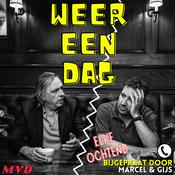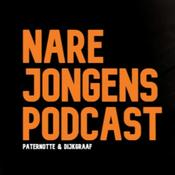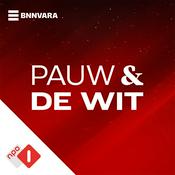Beschikbare afleveringen
5 van 150
- Stanford doubles down on legacy admissions, ditching Cal Grant funds to keep donor perks aliveStanford To Continue Legacy Admissions And Withdraw From Cal Grants. - Stanford will maintain legacy admissions for Fall 2026 despite California’s AB 1780 banning such preferences in private universities receiving state funds.\n. - To comply, Stanford plans to exit the Cal Grant program and replace that aid with private funding internally.\n. - AB 1780 requires annual reporting on compliance and legacy admit statistics but no financial penalties.\n. - Legacy advantages largely favor white applicants and wealthy families, raising concerns about fairness and racial equity, especially after Supreme Court rulings against race-conscious admissions.\n. - Stanford defends the move citing the financial importance of alumni and donor contributions and commits to ongoing analysis while public universities in California have abandoned legacy preferences.. . Debian 13 "trixie" Released: Universal OS Advances. - Debian 13 “trixie” released August 9, 2025, after over two years of development with 5 years of security and long-term support.\n. - Supports seven architectures including new riscv64; drops regular support for i386 and last release for armel.\n. - Contains ~70,000 packages with 14,100 additions and 45,000 updates; Linux kernel 6.12 (LTS), GNOME 48, KDE Plasma 6.3, GCC 14.2 among key updates.\n. - Introduces progress toward fully reproducible builds and improved installation options like live images with Calamares and standard installer support.\n. - Enhancements include speech synthesis, btrfs rescue improvements, and secure boot support, targeting robustness for desktops, servers, and cloud environments.. . Did California's Fast Food Minimum Wage Reduce Employment?. - Study finds California’s $20 fast food minimum wage (April 2024) caused a 2.7-3.2% drop in fast food employment relative to other states, equating to about 18,000 lost jobs.\n. - Uses QCEW data and controls for pre-policy trends and employment in other industries to isolate effect.\n. - Highlights ongoing debate in labor economics about trade-offs between wage increases and employment levels.\n. - Invites nuanced discussion on policy impacts beyond raw numbers, including automation and socio-economic consequences.\n. . CSS-Only Dynamic Sky Simulation for HTML Day 2025. - Web service created that simulates current sky colors at the user’s approximate location using only CSS gradients, updating every minute without client-side JavaScript.\n. - Simulates atmospheric conditions via absorption and scattering coefficients for realistic yet minimalist rendering.\n. - Source code available on GitHub; utilizes Cloudflare IP geolocation to determine latitude and longitude.\n. - Raises discussion on realism versus simplicity in UI design, supported by server-side computation and modern web infrastructure.. . Rethinking Tech Hiring: An Engineer’s Critique. - Critiques common tech hiring practices (LeetCode-style, take-homes) emphasizing wasted time, lack of differentiation, and susceptibility to AI shortcuts.\n. - Argues interviews must reflect real work, respect candidates’ time, and distinguish senior from junior engineers.\n. - Advocates for code review-based interviews reversing usual time asymmetry, revealing collaboration, design judgment, and interpersonal skills.\n. - Stresses hiring as a collaborative process, including meeting future managers to assess cultural fit and leadership.\n. - Warns disrespecting candidates drives away top talent, urging humane, efficient, and insightful evaluation methods....--------
- OpenAI sparks uproar by abruptly retiring GPT-4o, but Sam Altman pledges its return for Plus usersThe surprise deprecation of GPT-4o for ChatGPT consumers. OpenAI retired several older ChatGPT consumer models, including GPT-4o, immediately upon GPT-5 launch to simplify the user experience and reduce confusion from the prior model picker. Conversations using retired models automatically switched to the closest GPT-5 variant or specialized modes like GPT-5-Thinking. This removal frustrated users who preferred GPT-4o for creative, emotional, and long-form interactions rather than coding tasks. OpenAI CEO Sam Altman responded by promising to restore GPT-4o access for Plus subscribers, reflecting openness to community feedback...--------
- OpenAI launches GPT-5, a smarter, faster AI expert team ready to revolutionize coding and work efficiencyGPT-5: OpenAI’s Latest AI Model. - GPT-5 is OpenAI’s smartest, fastest, and most reliable model yet, excelling in domains like math, science, finance, law, and coding.. - Advanced coding features enable handling complex tasks end-to-end, producing cleaner code with improved debugging and design support.. - Expressive writing capabilities assist with clearer communication across stories, speeches, and professional messaging.. - Health-related responses are more precise and actionable, framing GPT-5 as a proactive thought partner.. - ChatGPT integration includes personalization options (selectable personalities, chat colors, voice modulation), a study mode, and Gmail/Calendar connectivity for personalized assistance.. - Developers benefit from advanced agentic workflows, improved steerability, and new API options (‘minimal’ reasoning, verbosity control).. - The model supports up to 400K token context windows and outputs up to 128K tokens, available in three pricing tiers: Nano, Mini, and full GPT-5.. - Enterprise features allow secure integration with corporate data sources (Google Drive, SharePoint), providing expert-level results without switching models.. - Emphasis on reducing hallucinations and falsehoods improves trustworthiness and usability without a radical AGI leap, signaling a mature AI landscape focused on specialization and commoditization.. . ---. GPT-5: Simon Willison’s In-Depth Review. - GPT-5’s hybrid architecture routes queries among specialized submodels with varied reasoning depths (minimal to high), improving reliability and task competence.. - Offers three model sizes with aggressive pricing and large token limits (400K+) supporting multimodal inputs (text and images) though output remains text-based.. - Safety improvements include “safe-completions” prioritizing safe outputs over refusals and reduced sycophancy through post-training.. - External red-teaming shows marked reduction in prompt injection attacks but persistent security concerns.. - Introduces “reasoning traces” in API to expose internal thought processes for developer transparency.. - Creative evaluation via SVG benchmarks (e.g., “pelican riding a bicycle”) highlights GPT-5’s improved capabilities in generating complex vector graphics descriptions.. - Seen as an evolutionary model enhancing reliability and user experience rather than delivering transformative breakthroughs.. . ---. GPT-5 for Developers: Technical Milestones and Adoption. - Released August 2025, GPT-5 achieves state-of-the-art coding benchmark results: 74.9% on SWE-bench Verified, 96.7% on τ²-bench telecom, excelling at tool calling and frontend development.. - Features an unprecedented 400K token context window for deeper context retention and collaborative workflows.. - New API parameters enable customizable verbosity and reasoning depth to balance detail and computational cost.. - Safety gains reduce factual errors and hallucinations by ~80% compared to GPT-4.1-based predecessors.. - Notable endorsements highlight GPT-5’s intelligence and polish; however, community feedback shows occasional struggles with basic instructions and inefficiencies in some languages.. - Positioned to transform developer workflows via multi-agent orchestration and advanced tool integration, reshaping coding task management.. - Pricing is highly competitive, enabling flexible access across usage needs.. . ---. PhoenixBIOS 1.4 Release 6.0 in VMware Virtualization. - The BIOS snippet from PhoenixBIOS 1.4 Release 6.0, VMware BIOS build 314, illustrates the foundational system firmware enabling virtualization.. - Powers virtual hardware components such as VMware Virtual IDE CD-ROM Drive during VM boot processes.. - Represents the interface layer bridging legacy BIOS standards with modern virtual machine emulation.. - Highlights the evolution of BIOS technology integrated with virtualization platforms, critical for seamless hardware abstraction.. - Relevant for engineers and system architects interested in virtualization infrastructure and legacy system support.. . ---. How AI Conquered the US Economy: A Visual FAQ by Derek Thompson. - AI drives a major economic divide: a booming sector with giants like Microsoft, Nvidia, Meta fuels ~60% of recent stock market growth versus stagnating traditional consumer markets.. - Massive investments of $100–200 billion in six months by leading tech companies rival historic infrastructure projects.. - The top 10 S&P 500 companies dominate net income growth, reflecting concentrated economic power linked to AI advances.. - AI adoption among software and management professionals is twice as rapid as early Internet uptake.. - Productivity gains reported, notably ~60% of elementary teachers using AI to save six hours weekly, though some claims may be overstated.. - Cultural impact seen in academic writing trends indicating pervasive AI usage.. - Provides balanced analysis combining technical, economic, and cultural insights with measured caution about AI’s long-term effects....--------
- Kitten TTS: Ultra-lightweight, offline text-to-speech for any deviceKitten TTS . - Open-source, highly efficient text-to-speech model with 15 million parameters and <25MB size.\n. - CPU-optimized, runs offline on virtually any device including embedded systems without needing GPUs.\n. - Offers multiple premium, expressive voices with real-time synthesis speeds (~5x real-time on desktop CPUs).\n. - Developer preview with fast load times (~700ms on high-end hardware); voice quality is good but slightly artificial.\n. - Licensed under Apache-2.0, enabling wide integration without cloud dependence or license restrictions.\n. - Sparks discussion about the future of tiny, offline AI models for privacy, speed, and low-power environments.\n. - Setup complexity around Python environments remains a barrier for some users.. . 9-bit Bytes: An Alternate History of Computing. - Explores the hypothetical impact if 9-bit bytes had replaced 8-bit as the standard.\n. - Expands IPv4 addresses from 32 to 36 bits, postponing address exhaustion and easing NAT/IPv6 adoption.\n. - Extends UNIX timestamps range to year 3058, eliminating the 2038 problem.\n. - Unicode expanded to 18 bits, accommodating over 262,000 characters natively, avoiding current compromises.\n. - Enables 36-bit pointers supporting up to 32GB process memory on 32-bit systems.\n. - Other benefits include larger AS numbers, port IDs, cleaner instruction sets, and better color encoding.\n. - Challenges include necessary network protocol evolution (TCP sequence numbers) and adapting hardware/kernels to non-power-of-two byte sizes.\n. - Suggests these manageable tradeoffs would have improved many fundamental standards and postponed technical constraints.. . Claude Code IDE for Emacs. - Deep integration of Claude Code AI assistant into Emacs using the Model Context Protocol (MCP).\n. - Provides bidirectional awareness: Claude can run within Emacs and use its editing features, project management, LSP, and Elisp functions.\n. - Supports automatic project detection, multi-session buffers, terminal color integrations, and access to xref, tree-sitter, imenu, Flycheck/Flymake diagnostics, and ediff diff views.\n. - Exposes custom user Emacs functions to AI via MCP tools, enabling domain-specific workflows and programmable AI commands.\n. - Supports Emacs 28.1+; setup involves standard Emacs packaging and a separate Claude Code CLI install.\n. - Enables complex queries such as project-wide symbol references or syntax tree analysis with AI deeply embedded in the editor context.\n. - Early-stage, with debug logs and workarounds for terminal bugs, but demonstrates a new level of AI-assisted IDE integration for Emacs users.. . Rethinking DOM from First Principles (Steven Wittens). - The DOM and core web platform have stagnated, burdened by legacy design, excessive complexity, and bloated APIs (>350 properties per node).\n. - CSS conflates text styling (inheritance) and layout (containment), resulting in awkward layout code and performance pitfalls.\n. - Modern UI development on the web involves "kitbashing" fragmented technologies (HTML/CSS/SVG) and manual behavior management.\n. - Proposes a radical redesign: a minimalist, multi-threaded, asynchronous data model with first-class layout and GPU acceleration.\n. - Highlights projects like Use.GPU’s minimal HTML-like renderer as promising alternatives.\n. - Calls for browsers designed for clean UI models that shed legacy constraints, enabling better performance and developer experience.\n. - Emphasizes that current web platform evolution is incremental patchwork rather than foundation-led innovation.. . Jules: Google’s Asynchronous Coding Agent Now Public. - Jules, powered by Gemini 2.5 Pro, exits beta with UI polish, bug fixes, GitHub issues and multimodal integration.\n. - Uses structured AI planning for improved code quality, supporting asynchronous workflows where users submit tasks and return for results later.\n. - Offers tiered usage: Introductory, AI Pro (5x capacity), and AI Ultra (20x capacity) with free AI Pro for eligible college students.\n. - Fits mobile and limited-time coding scenarios, enabling coding on-the-go with async task management.\n. - User feedback highlights uneven quality across tasks, beneficial rapid prototyping, but sometimes inferior to competitors like Claude Code or GitHub Copilot.\n. - Google’s fragmented AI product ecosystem complicates user experience with multiple separate subscriptions and interfaces.\n. - Demonstrates growing interest in asynchronous AI coding assistants but reflects ongoing challenges in coherence, documentation, and UI consistency in the AI coding space....--------
- OpenAI launches open-weight GPT-OSS models rivaling proprietary LLMs with full customization and chain-of-thought transparencyOpenAI launches gpt-oss open-weight LLMs. - Two sizes: 120B parameters for powerful hardware, 20B for desktops/laptops.\n. - Enable agentic tasks with chain-of-thought reasoning, tool use (web search, Python execution).\n. - Fully customizable with fine-tuning and adjustable reasoning effort.\n. - Provide full chain-of-thought outputs for transparency and debugging.\n. - Apache 2.0 licensed for commercial use without patent or copyleft risks.\n. - Performance close to OpenAI’s proprietary models on benchmarks like MMLU and AIME.\n. - Extensive safety testing with external reviews marks progress for open model safety.\n. - Developer-friendly playground and broad vendor collaboration enhance accessibility.\n. - Community excited about local frontier-quality LLMs but highlight performance trade-offs vs. other open models.\n. . ---. AI tools don’t make engineers 10x productive—here’s why. - AI coding assistants excel at boilerplate and small scripts but struggle with large codebases, complex contexts, and nuanced language.\n. - Software delivery involves many steps beyond coding (ideation, review, testing, deployment) that AI has not notably shortened.\n. - “10x engineer” productivity often comes from reducing unnecessary work, something AI does not replicate.\n. - Many 10x productivity claims are hype or management-driven pressure rather than measurable gains.\n. - Emphasizes maintaining coding joy and mastery over speed, urging realistic expectations about AI’s impact.\n. - Advises managers to foster trust and avoid unrealistic productivity demands fueled by AI hype.\n. . ---. DeepMind unveils Genie 3: scalable real-time 3D world model. - Generates diverse, immersive 3D environments at 720p/24fps without explicit 3D representations like NeRFs.\n. - Supports text-prompted creation of dynamic, interactive worlds including natural, historical, and fantastical settings.\n. - Simulates natural phenomena (water, lighting) and complex environment interactions.\n. - Enables text-driven user interactions and powers embodied AI agents (e.g., SIMA) for navigation and task pursuit.\n. - Demonstrates emergent long-term consistency over minutes but limited multi-agent social interaction and geographical accuracy.\n. - Released as a controlled research preview emphasizing safety in open-ended world generation.\n. - Use cases include education, AI training, robotics simulation, and generative media.\n. - Prompts community reflection on neural world models versus traditional 3D engines and prospects of robots “learning in their dreams.”\n. . ---. US pressures TSMC to invest $400B and buy 49% stake in Intel for tariff relief. - US ties tariff relief on Taiwan to TSMC acquiring a large Intel stake and massive US semiconductor investments.\n. - Intel faces revenue decline ($79B in 2021 to $53B in 2024), production delays, and strategic uncertainty despite federal grants.\n. - The $400B investment plus forced acquisition is financially and politically controversial.\n. - Industry doubts feasibility and critiques the approach as extortionate, likely inflating consumer costs.\n. - Seen as a geopolitical move to bolster US semiconductor independence and tie Taiwan semiconductor capability to US defense commitments.\n. - Alternative partnership suggestions exist, including collaborations with Apple or Nvidia.\n. - Highlights the complex interplay of trade policy, national security, and global chip supply chains.\n. . ---. uBlock Origin Lite: minimal, declarative content blocker for Apple devices. - Lightweight, free content blocker for iPhone, iPad, Mac, and Apple Vision, available via Mac App Store.\n. - Uses declarative filtering leveraging browser-native CSS/JS injection—no persistent background service.\n. - Integrates popular filter lists (EasyList, EasyPrivacy, Peter Lowe’s Ad servers).\n. - Minimal CPU/memory footprint; service worker activates only during UI interactions.\n. - Compatible with iOS 18+, macOS 15+, visionOS 2.0+.\n. - No user data collection ensured by a detailed privacy policy.\n. - Appeals to privacy-conscious users wanting streamlined ad blocking without extension bloat or performance overhead....--------
Meer Nieuws podcasts
Trending Nieuws -podcasts
Over Hacker News Daily
Daily summaries from the most popular Hacker News posts, transformed into focused audio discussions. Short, easily digestible highlight reels. Perfect for staying up-to-date with emerging tech developments during your commute or coding sessions.
Podcast websiteLuister naar Hacker News Daily, NOS Met het Oog op Morgen en vele andere podcasts van over de hele wereld met de radio.net-app

Ontvang de gratis radio.net app
- Zenders en podcasts om te bookmarken
- Streamen via Wi-Fi of Bluetooth
- Ondersteunt Carplay & Android Auto
- Veel andere app-functies
Ontvang de gratis radio.net app
- Zenders en podcasts om te bookmarken
- Streamen via Wi-Fi of Bluetooth
- Ondersteunt Carplay & Android Auto
- Veel andere app-functies


Hacker News Daily
Scan de code,
download de app,
luisteren.
download de app,
luisteren.
































